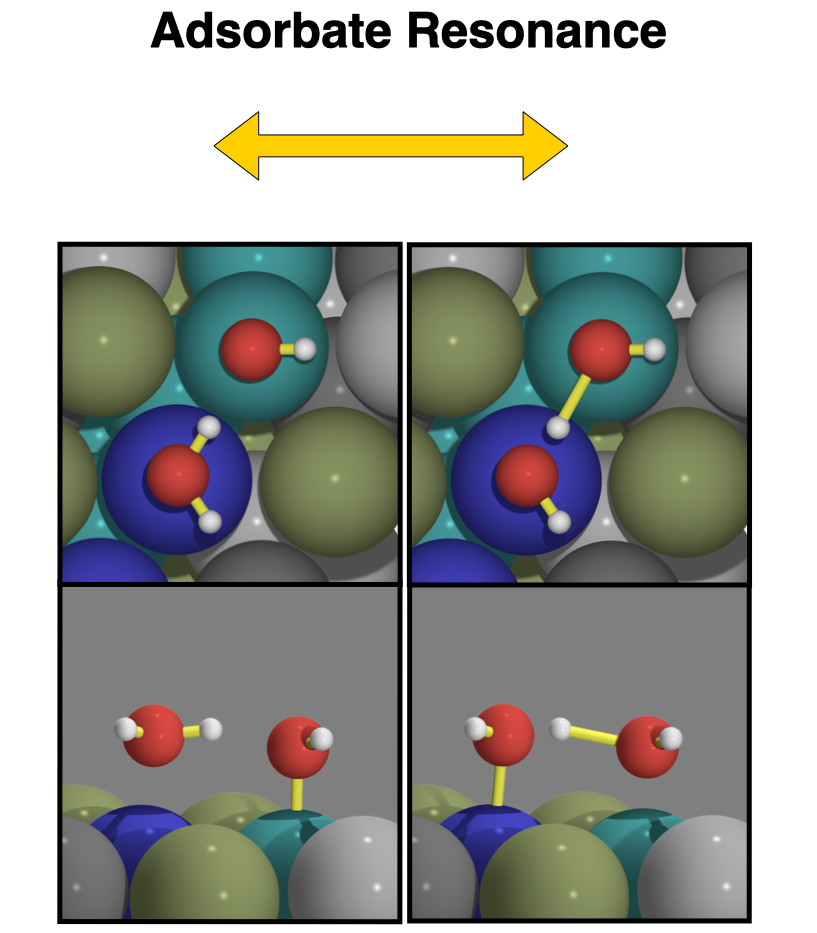
Adsorbate Resonance Induces Water-Metal Bonds in Electrochemical Interfaces
Marcus F. Nygaard, Martin L. S. Nielsen, and Jan Rossmeisl*
*Correspondence: jan.rossmeisl@chem.ku.dk
DOI: To be supplied
Link to data and scripts for reproduction: sharelink
Abstract
This study delves into the intricate interactions between surface-near species, OH and H2O, on electrodes in electrochemical interfaces. These species are an inevitable part of many electrocatalytic energy conversion reactions such as the oxygen reduction reaction. In our modeling, we utilize high statistics on a dataset of complex solid solutions with high atomistic variability to show the emergence of H2O-metal covalent bonds under specific conditions. Based on DFT calculated adsorption energies of many thousands of different surface compositions, we provide a quantifiable physical understanding of this induced water covalency, which is rooted in simple quantum mechanics. Directional hydrogen bonding between surface-near H2O and OH, enables surface bonding electrons to delocalize mediated by near-symmetrical adsorbate resonance structures. The different adsorbate resonance structures have different surface coordination explaining the induced H2O-metal bonding.
